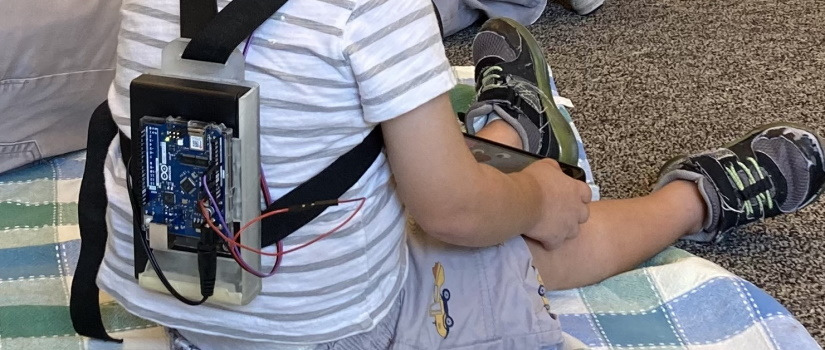November 24, 2021 | Erin Bluvas, bluvase@sc.edu
UofSC researchers from the Arnold School’s Department of Exercise Science and the College of Engineering and Computing’s Department of Electrical Engineering are on the path to solving a widespread problem faced by scientists who study children’s activity in the name of obesity prevention. The team has created a wearable device that is custom-made for measuring children’s routine activities (e.g., physical activity, sedentary time, sleep, etc.).
The project has been in the works for more than a year, recently receiving an additional boost of support from a $432K R21 award from the National Institute of Diabetes and Digestive and Kidney Diseases. The team, which includes members of the Arnold Childhood Obesity Initiative, has the long-term goal of understanding the complex relationship of physical activity and its link to health outcomes such as obesity, cardiovascular disease and diabetes.
“Despite the popularity and availability of numerous activity trackers, few of these devices provide a comprehensive picture of energy expenditure,” says Bridget Armstrong, assistant professor of exercise science and principal investigator on the new R21 grant. “Even fewer were designed with children in mind, so they have inherent limitations related to size, comfort and daily care/maintenance.”
The solution? A one-inch by one-inch wearable device known as the PATCH (see early protoype above). After observing the absence of monitors that accurately and comfortably capture the everyday activities of children, the researchers designed a device that is custom-made for kids and their lifestyles: small, water-resistant, wearable, all-in-one.
PATCH combines multiple sensors (e.g., heart rate, accelerometry) into a single device to accurately measure children’s energy expenditure under real-life conditions. The unobtrusive device can be attached to skin for extended wear over many hours or days without the need to charge due to its low-power design.
Another challenge PATCH solves is the lack of raw data offered by existing (both consumer- and research-grade) devices. Researchers’ ability to collect reliable and valid data directly from study participants is essential to understanding physical activity behaviors and developing effective interventions for addressing childhood obesity.
“The PATCH has the potential to serve as a powerful assessment tool in evaluating children’s free-living energy expenditure and physical activity,” Armstrong says. “By providing access to raw data, employing open-source methods, and using a non-invasive design that enables prolonged data collection, this new technology can overcome the limitations of existing devices and become the new research standard for physical activity studies among children.”
In addition to the NIH grant, which will involve 120 children (ages 3-8 years old) test-driving the device, the team is working on other projects related to PATCH. In one application, the team is using this technology to measure pulse wave velocity in collaboration with exercise science assistant professor Abbi Lane-Cordova.
Related:
Children’s health-related behaviors negatively impacted by COVID-19 pandemic
COVID-19 pandemic accelerates children’s weight gain, BMI
UofSC study shows COVID-19 restrictions have negative impacts on children
